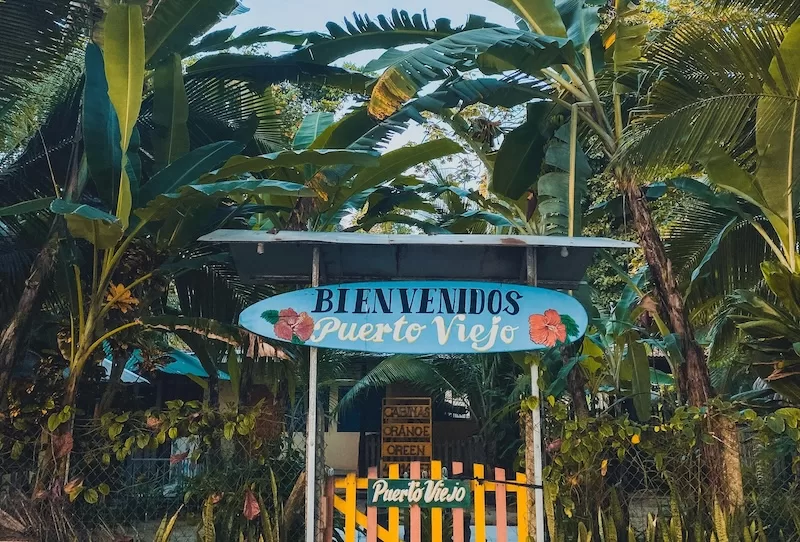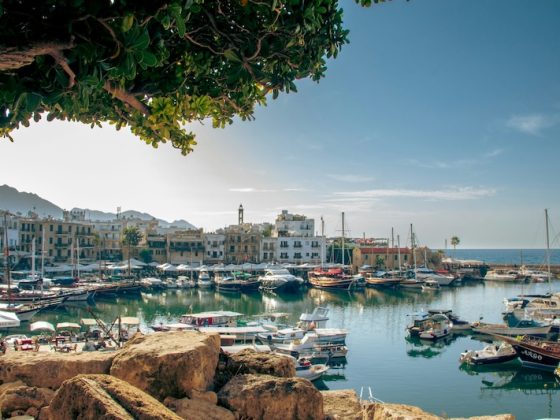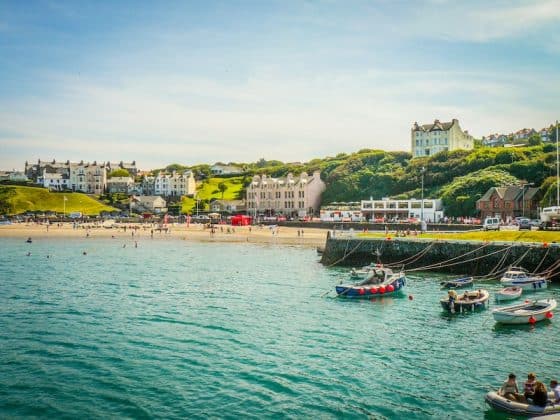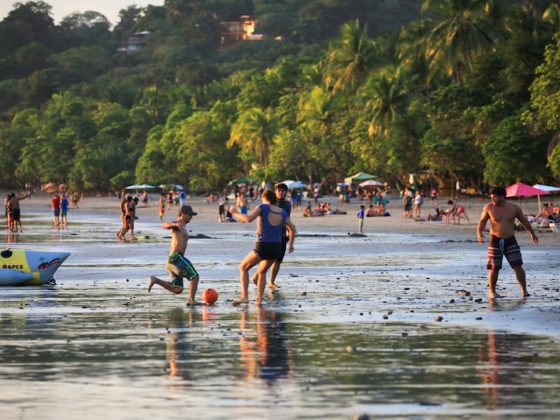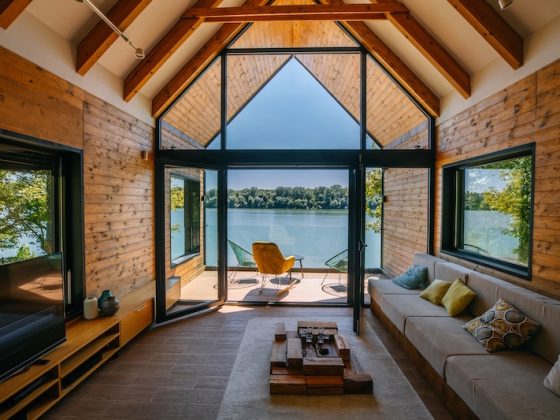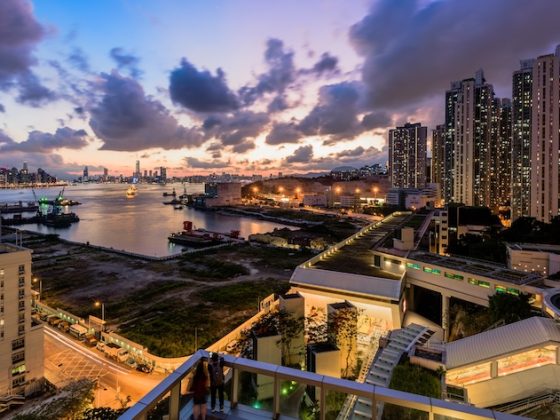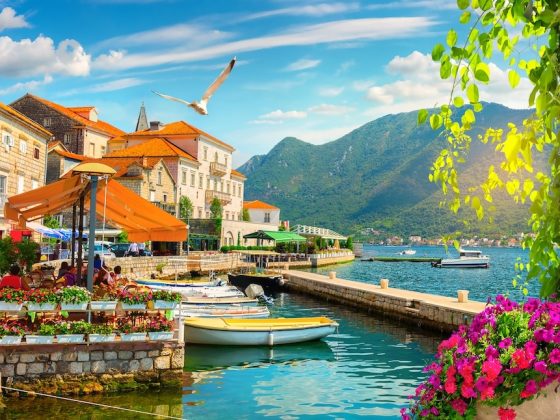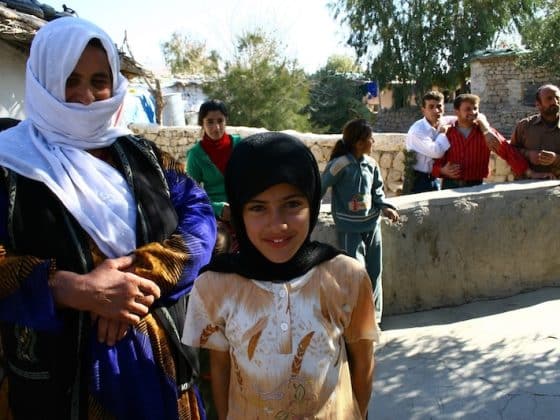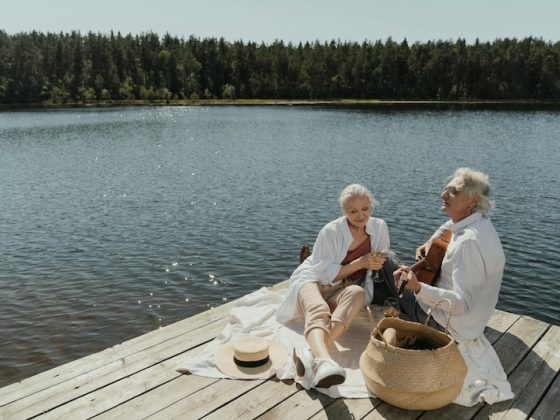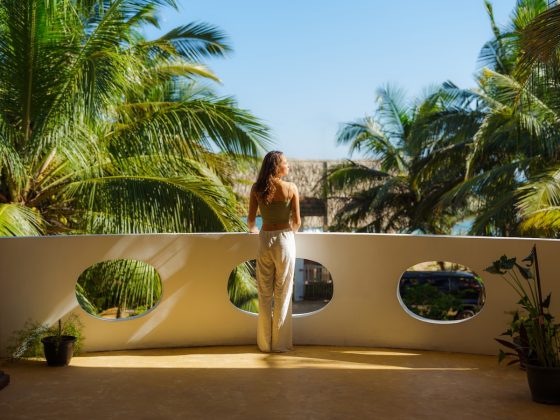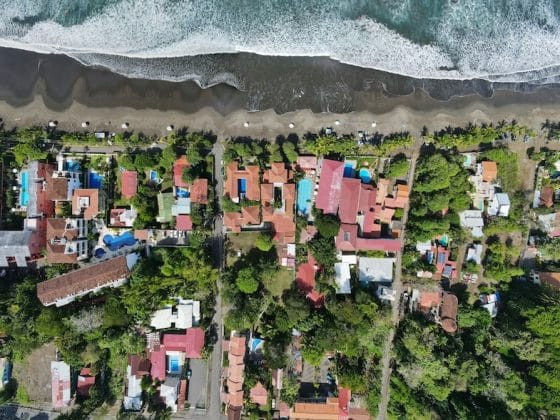Introduction
Moving to Costa Rica is a bold lifestyle shift. Maybe you’re drawn by its sprawling rainforests, its year-round tropical climate, or the promise of pura vida. Whatever the reason, the idea of moving to Costa Rica can stir both excitement and questions.
In this article, you’ll find answers to the most critical questions: How much will it cost? What visas do you need? Where should you live? By weaving real data, practical advice and insider tips, this article will help you plan and act with confidence.
Why Move to Costa Rica?
Natural beauty and climate
Every morning here starts with birdsong. Literally. The country covers just 0.03% of the world’s landmass, yet it’s home to nearly 5% of all known species. That’s more wildlife per square mile than almost anywhere else on Earth.
Let’s not forget about Costa Rica’s serious commitment to the environment. Nearly 99% of its electricity comes from renewable sources, and the government has pledged to become carbon-neutral, a global first. Locals take pride in that. You’ll feel it in the way they talk about the forest or the sea: with respect, not ownership. The country makes you slow down, breathe deeply, and think twice before taking the car instead of walking. For environmentally minded expats, being part of this lifestyle can be incredibly appealing.
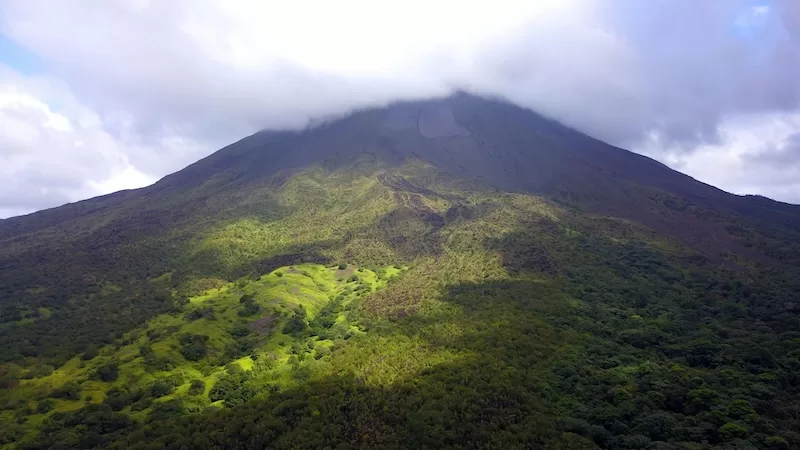
Quality of life and healthcare
But it’s not just the scenery. It’s the standard of living that keeps people here. Costa Rica’s Human Development Index (HDI) score reached 0.833 in 2023, placing it in a very good global position for life expectancy, education, and income.
You’ll notice how strong the middle class is, how well-kept public parks are, how locals smile easily. Healthcare is a big part of that. The Caja Costarricense de Seguro Social (CCSS), known simply as la Caja, provides universal healthcare funded through contributions. Expats who gain residency can join it, while private clinics offer an impressive level of care at a fraction of U.S. prices. The World Bank reports that Costa Rica spends 7.18% of its GDP on health, higher than many countries at its income level. That’s part of why retirees, families, and remote workers are all drawn here. You can age gracefully, work remotely with reliable Wi-Fi, and know that if you get sick, you’ll be taken care of without fear of financial ruin.
Safety and political stability
If there’s a single phrase that defines Costa Rica, it’s “peaceful by design.” The country abolished its army in 1948, choosing to redirect that funding toward education and healthcare. Schools, not soldiers: that’s been the national motto for over 70 years.
This decision helped shape a democracy that consistently ranks as one of Latin America’s most stable. Elections are calm. The press is free. And you can genuinely feel that social trust in daily life. Neighbors greet you, strangers offer help when your car breaks down, and protests tend to involve music and banners, not violence.
Crime exists, of course, mostly opportunistic theft in tourist areas. But violent crime rates remain relatively low compared to much of Central America. Expats often say they feel safer walking their dog in Costa Rica at night than in many North American cities.
And perhaps most importantly, there’s a cultural sense of optimism here, a collective belief that “todo va a estar bien.” Everything will be okay. Maybe that’s why Costa Rica consistently ranks among the world’s happiest countries according to the Gallup World Poll (in 2025, it climbed to the position of 6th happiest country in the world!).
So, once you’ve fallen for the idea of pura vida, the next step is making it practical. Where do you begin?
Preparation before Moving
Researching regions and cities
Choosing where to live in Costa Rica is half the adventure and it’s where most expats get hooked. Each region feels like a different country entirely.
The Central Valley, for instance, is home to the capital, San José, and charming mountain towns like Atenas, Grecia, and Heredia. The weather here is famously called eternal spring: daytime highs around 75°F (24°C), cool evenings, and just enough rain to keep the landscape flourishing. You’re close to hospitals, international schools, shopping centers, and the airport, which makes it ideal for retirees, families, and remote workers who like a bit of urban convenience.
If you check out the Pacific coast, the energy completely shifts. Towns like Tamarindo, Nosara, and Manuel Antonio mix yoga studios with beach bars, digital nomads with surfers, and sunsets that look Photoshopped. The Guanacaste region tends to be dry and sunny most of the year, while the Southern Zone (Dominical, Uvita, Ojochal) is a bit wilder, with jungle-covered hills dropping straight into the sea. Life feels slower, more elemental. You learn to plan your day around the tides and howler monkeys.
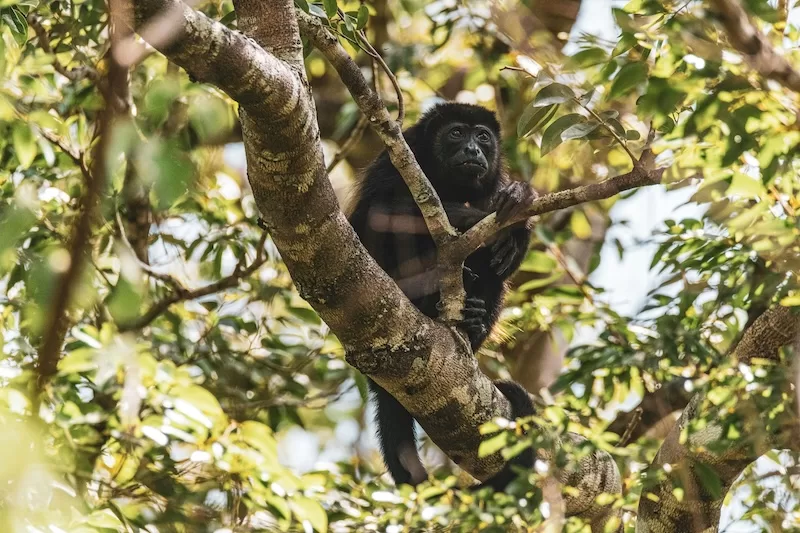
Over on the Caribbean side, everything changes again. Puerto Viejo de Talamanca feels more bohemian, influenced by Afro-Caribbean and Indigenous cultures. There’s reggae music drifting from beach cafés, cacao farms in the jungle, and a humid, green environment that stays vibrant all year long. It’s a bit more off-the-beaten-path, which appeals to those who want fewer tourists and a tighter-knit community.
A fun fact: You can drive from coast to coast in under seven hours, yet you’ll cross microclimates ranging from tropical dry forest to cool cloud forest to beachside humidity. That’s why many expats rent in one region for six months, then try another before buying. It’s the best way to figure out which “Costa Rica” feels like yours.
Visa types and immigration requirements
Once you’ve chosen your dream spot, the next step is making it official. Costa Rica offers several residency paths, and they’re surprisingly welcoming to foreigners, if you come prepared.
The most common is the Pensionado (Retiree) Residency, perfect for those with a stable pension or retirement income. You’ll need proof of at least $1,000 USD per month, and in exchange, you get renewable two-year residency, access to the public healthcare system, and the right to import your household goods duty-free (once).
If you’re not retired but have steady income, the Rentista (Fixed Income) Residency is a great fit. It requires proof of $2,500 USD per month for two years or a US$60,000 USD deposit in a Costa Rican bank. It’s popular with freelancers, digital nomads, and small business owners who want a longer stay than a tourist visa allows.
There’s also the Inversionista (Investor) category, ideal for those purchasing property or starting a business. The minimum investment is currently US$150,000. And for those working with a local company or setting up shop independently, there’s the Autónomo (Self-Employed) route.
And now, the newest and most exciting option for many modern expats: the Digital Nomad Visa. Launched in 2022, this visa allows remote workers and freelancers to live in Costa Rica for up to one year, with the option to renew for another. To qualify, you must show a minimum monthly income of US$3,000 (or US$4,000 for couples/families) from foreign sources. The perks are solid: you’re exempt from local income tax, can open a local bank account, and can even import work equipment tax-free. You’ll also get access to faster immigration lines at the airport and the ability to drive in Costa Rica using your home country’s license.
Applications go through the Dirección General de Migración y Extranjería, and like everything bureaucratic here, patience helps. Think of it as your first cultural lesson in pura vida: things take time, but they do get done.
Pro Tip: Make an appointment at your nearest Costa Rican consulate before you move: it’s faster to legalize some documents while still in your home country.
Budgeting and cost of living
Costa Rica isn’t a “cheap” destination, but it is one of the few places where your money buys genuine quality of life. It all depends on where and how you live.
In the Central Valley, a comfortable one-bedroom apartment might cost $700–$1,500 USD per month depending on location and amenities. Out by the coast, prices rise near the beach but move just 10 minutes inland and rent drops. Utilities (electricity, water, internet, trash collection) average around $100–$200 USD monthly, though coastal air conditioning can nudge that higher.
Groceries can be remarkably affordable if you shop like a local. Visit the weekly feria (farmers’ market), where a week’s worth of fresh produce might cost $40–80. Imported goods, on the other hand (say, your favorite peanut butter or fancy wine) come at a premium. Local “sodas” (small, family-run eateries) serve full meals for $6–10, and you’ll quickly learn that the casado (rice, beans, plantain, salad, and meat) is both delicious and economical.
Transportation costs vary: used cars are expensive due to import taxes, but public buses are reliable and cheap, with routes reaching nearly every town. Many expats combine a modest car for errands with buses for longer trips.
Healthcare and insurance are budget-friendly too. Enrollment in la Caja costs a fraction of private insurance elsewhere, and private consultations remain accessible.
To put it in perspective, a couple living modestly in the Central Valley can do so comfortably on $2,500–$3,000 USD per month, while coastal life with more luxuries might run $3,500 USD +. The 2023 Mercer Cost of Living Index placed San José right in the middle of international cities, more affordable than Panama City or Mexico City, but pricier than Medellín or Quito.
Read More Like This: Costa Rica Cost of Living Guide: Prices, Budgets, and Tips
Housing and Living Arrangements
Renting vs. buying property
If there’s one thing every seasoned expat will tell you, it’s this: rent before you buy. Costa Rica looks small on the map, but each region feels wildly different once you live there. Renting for six to twelve months gives you a chance to figure out the rhythms: how the rain really sounds in October, how the road holds up after a storm, how noisy the neighbors’ roosters actually are.
Most expats start with a short-term Airbnb or local rental while scouting neighborhoods. Facebook Marketplace and local expat groups are good starting points, though traditional agents can help you navigate the legal side. Expect to pay one month’s deposit and possibly a small finder’s fee.
If and when you’re ready to buy, it’s great to know foreigners have the same property rights as Costa Ricans, even for beachfront homes, though “maritime zone” regulations apply within 200 meters of the high-tide line. Land titles can be checked at the National Registry (Registro Nacional), and any lawyer worth their salt will insist on a full title search before you transfer funds. If you hear the words concession land or right of possession, pause and get legal advice. Those phrases can mean a world of difference in ownership rights.
Also, make sure you check water rights (concesión de agua) before buying rural property; access to municipal or well water can make or break the deal. Many expats find that hiring a reputable local attorney early on saves a lot of headaches. Costa Rica’s bureaucracy rewards patience, not speed.
For those envisioning life in Costa Rica, Grand View Estates—presented by ECI Development—blends adventure with sustainable living. With expansive lots averaging 1.6 acres, it invites you to create your own eco-friendly sanctuary amid Costa Rica’s breathtaking natural beauty.
Fun fact: Costa Rica has one of the highest homeownership rates in Latin America: over 70% of residents own their homes, compared to about 65% in the U.S.
Popular expat destinations
After a few months here, you’ll realize there’s no single “expat Costa Rica.” There are many. Each pocket of the country attracts a different kind of dreamer.
- Atenas & Grecia (Central Valley) – Known for “the best climate in the world,” these towns sit about an hour from San José and 45 minutes from the Pacific coast. You get panoramic views, mild weather, and a friendly community of both locals and expats. It’s ideal if you want proximity to city comforts without the chaos.
- Guanacaste (Pacific Northwest) – Golden beaches, dry heat, and a social calendar built around sunsets. Tamarindo, Playas del Coco, and Flamingo attract digital nomads, retirees, and families alike. This is the country’s “California”: sunny, energetic, and a bit pricier than the rest.
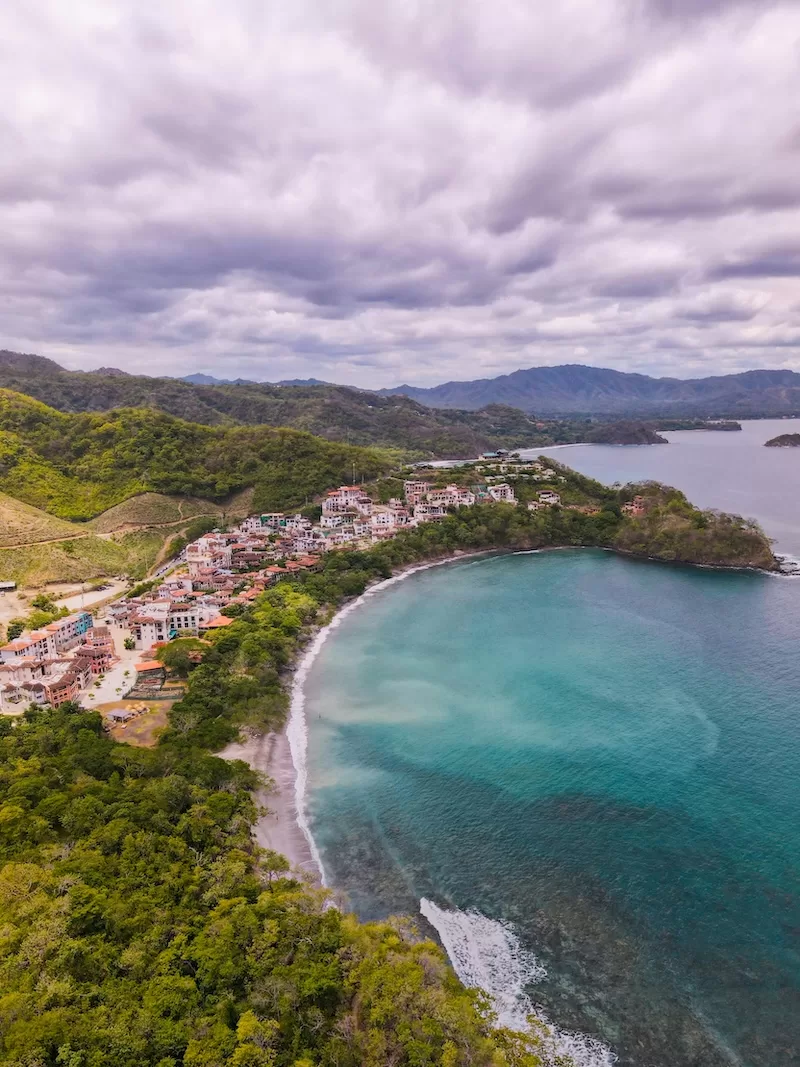
- Dominical / Uvita / Ojochal (Southern Pacific) – Misty mornings, hidden waterfalls, and the constant song of wildlife come with the package. Many expats here are sustainability-minded or semi-retired, drawn by privacy and a slower rhythm. Property tends to sit on hillsides with ocean views, a paradise for those who don’t mind a 4×4.
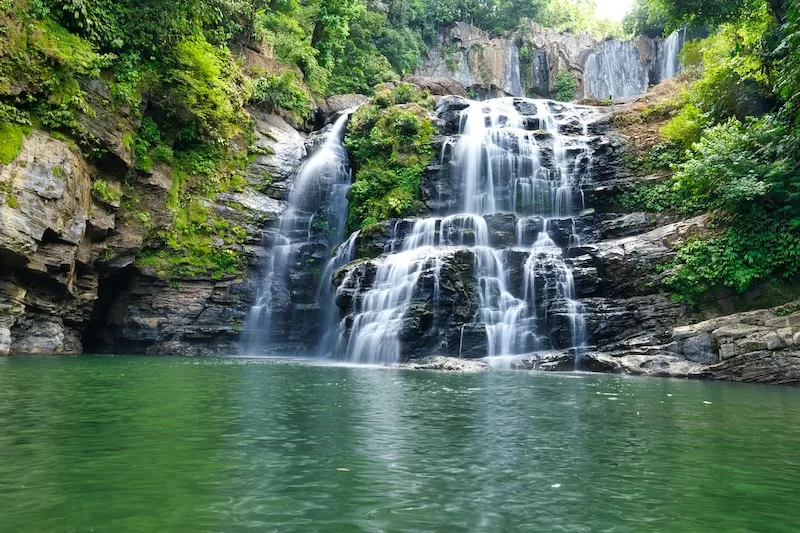
- Nosara / Santa Teresa – Surf meets mindfulness. Both towns have grown into global hubs for yoga, organic cafes, and remote work communities. Nosara is more family-oriented and planned, Santa Teresa more bohemian and beach-party eclectic. Either way, you’ll be doing meetings barefoot.
- Puerto Viejo (Caribbean) – Different vibe entirely: reggae, cacao, and jungle. This coast is green, humid, and culturally unique, with Afro-Caribbean, Bribri Indigenous, and European influences all blending into one mellow rhythm. It’s also one of the most affordable beach areas left.
Everywhere you go, you’ll find expats who swore they’d “just stay a year” and are now on year ten. The country has a way of getting under your skin.
Read More Like This: Costa Rica Homes for Rent: Best Areas, Prices, and Tips for Expats
Utilities, internet, and home services
Utilities in Costa Rica are reliable but vary by region. The Instituto Costarricense de Electricidad (ICE) handles most electricity, water, and telecom services. In the Central Valley, outages are rare and quickly resolved. On the coasts, you might get the occasional blackout, but most locals treat it as candlelit dinner time.
Electricity rates are higher than in some neighboring countries (averaging $0.22 per kWh). If you’re running A/C year-round, expect a bump in your bill. Many coastal homeowners are switching to solar panels, which not only reduce costs but make you power-outage-proof.
High-speed fiber-optic internet is expanding quickly. You’ll find excellent coverage in San José, Escazú, Atenas, and most Pacific towns, with speeds up to 200 Mbps in developed areas. In the more rural zones, expect 10–50 Mbps and occasional hiccups during storms. If your work depends on connectivity, invest in a 4G backup hotspot from Kolbi, Claro, or Liberty.
Other home services are easy to outsource. Landscaping, housekeeping, and pest control are affordable, often $15–30 per visit. Garbage collection is municipal and typically included in your property tax. Many neighborhoods even have dedicated WhatsApp groups for maintenance recommendations.
One thing you’ll notice quickly: Costa Rica runs on community. If your power goes out, someone nearby will text ICE for you. If your faucet leaks, a neighbor knows a cousin who’s a plumber. It’s part of the pura vida lifestyle: you might move here for the views, but you’ll stay for the people who make daily life easy and kind.
Employment, Income, and Banking
Remote work and freelancing
Costa Rica has become one of the most remote-work-friendly countries in Latin America. The mix of reliable internet (in most towns), a laid-back culture, and endless outdoor distractions makes it a sweet spot for digital nomads.
Since 2022, Costa Rica has officially recognized that reality through its Digital Nomad Visa (see above). Even without that visa, many expats operate as “location-independent” workers: copywriters, designers, consultants, teachers, you name it. Coworking spaces like Selina, Outsite, and WorknSurf have popped up from Tamarindo to Santa Teresa, complete with ocean-view desks, stable Wi-Fi, and community barbecues.

Local employment and work permits
Now, if your goal is to work for a Costa Rican company, it’s a little more complicated. Local jobs typically go to citizens or permanent residents first, as labor laws protect domestic workers. Work permits exist, but they’re harder to obtain unless you bring a unique skill set, like specialized tech roles, environmental consulting, or hospitality management.
That said, plenty of expats create their own opportunities. Some open cafés, yoga studios, or eco-tourism ventures; others buy into small hotels or offer bilingual services for locals. The Inversionista visa is perfect for this crowd: invest US$150,000 or more in a qualifying business or property, and you can gain temporary residency while actively managing your investment. Just remember that starting a business here means navigating municipal permits, health inspections, and the occasional “come back mañana” delay. Hire a good local accountant (contador) early, you’ll thank yourself later.
Banking, taxes, and financial logistics
Once you’ve got income sorted, you’ll need to set up your financial life, and this is where local know-how helps a lot.
Opening a bank account used to be an uphill battle for foreigners, but it’s getting easier. Banks like BAC Credomatic, Banco Nacional, and Scotiabank allow residency-holders (and sometimes even tourists) to open accounts with the right documentation: passport, local address, proof of income, and a tax ID (cédula jurídica or DIMEX number). Transactions are mostly digital; you’ll pay bills and even your gardener via SINPE Móvil, Costa Rica’s mobile payment app.
Pro tip: Costa Rican banks close early (usually by 3 p.m.) and lines can test your patience. Learn to do everything online.
Taxes are relatively straightforward once you understand residency status. If your income comes from abroad and you’re not legally classified as a tax resident (183+ days per year in the country), you don’t owe Costa Rican income tax. Even residents are only taxed on locally sourced income, not global earnings. That’s part of why retirees and remote workers flock here. The top personal income tax rate is 25%, but most expats fall well below that. Property taxes are low (0.25% of the registered property value) and luxury home taxes only kick in above certain thresholds. Import duties can be steep, though, so shipping entire households often costs more than furnishing locally.
Bank transfers between Costa Rica and other countries can be slow, so many expats maintain dual accounts: one at home, one locally. Wise, Payoneer, or Revolut are good for international transfers.
Common Challenges & How to Overcome Them
Bureaucracy and paperwork
Bureaucracy here has its own tempo: it’s slower, friendlier, occasionally confusing, but rarely impossible. You’ll need official versions of everything: birth certificates, marriage licenses, police background checks, all apostilled (authenticated for international use) and officially translated into Spanish. Most expats underestimate how early they should start this process. The golden rule? Gather your paperwork before you move: Costa Rican offices tend to prefer physical documents over PDFs or promises that “it’s on the way.”
Appointments with immigration offices can feel like a test of zen. Lines move slowly, and sometimes the system crashes mid-appointment. But there’s a silver lining: locals are unfailingly kind. You’ll often see people chatting in line, sharing snacks, or helping each other fill out forms.

Pro tip: The smartest investment you can make here isn’t in beachfront property: it’s in a good immigration attorney or gestor (legal agent). They know which documents actually matter, which lines move faster, and which office clerk responds best to a smile.
Adjusting to tropical environment
The tropical climate is one of the reasons you may want to move, but it’s also one of the first challenges you’ll face. Humidity can fog your glasses, curl your hair, and make your towels perpetually damp. The rainy season, or invierno, runs roughly from May to November, bringing spectacular afternoon storms that turn roads into rivers and fields into mirror-like lagoons.
Pro Tip: Keep silica gel packets or dehumidifiers in closets. Humidity here can mess up clothes and electronics if you’re not careful.
Power outages and spotty internet happen, especially in rural or coastal areas. A small backup battery or solar lamp will make you feel like a pro. Many homes rely on water storage tanks (tanques) for those days when the pipes run dry, a detail you’ll learn to appreciate after your first shower cut short.
Wildlife also becomes part of daily life. You’ll spot geckos on the walls (good luck charms), iguanas sunning on your fence, and the occasional army of ants that reminds you whose jungle this really is. Keep screens on your windows, seal your food well, and resist the urge to panic when a cicada lands on your coffee mug: they’re harmless, just enthusiastic.
No matter how beautiful the sunsets, homesickness has a way of sneaking in, usually around month three, when the excitement fades and the bureaucracy bites back. Most expats go through it, but the ones who thrive here all have one thing in common: community. Costa Rica has an incredible network of expat and local groups, from volunteer organizations to hiking clubs and book swaps. You’ll find yoga collectives in Nosara, pickleball leagues in Atenas, and beach clean-ups almost everywhere.
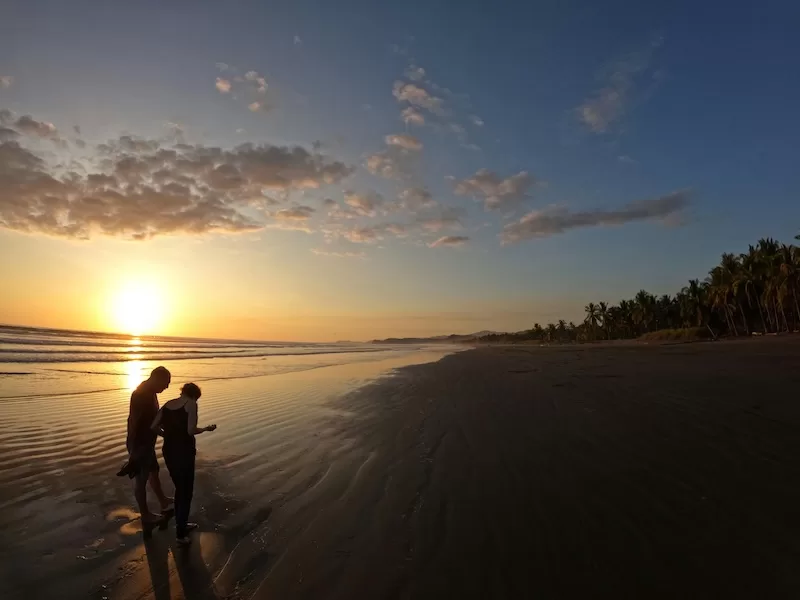
For emotional health, keep one foot in your old world too. Schedule regular video calls, plan visits from loved ones, or bring a little piece of home: a favorite coffee mug, your playlist, or even your family recipes. Balance is the secret.
Pro Tip: Volunteering is one of the easiest ways to integrate. Join wildlife rescues, local schools, or beach clean-ups: it connects you fast and earns you instant local respect.
Your Costa Rica Move Timeline
6–12 Months Before the Move
- Visit Costa Rica to explore regions and communities firsthand.
- Decide on your preferred lifestyle (beach, mountain, city).
- Start gathering key documents: birth and marriage certificates, police records, proof of income.
- Begin learning basic Spanish. Even 30 minutes a day makes a difference.
- Research visa options (Pensionado, Rentista, Inversionista, or Digital Nomad).
Pro Tip: Keep both physical and digital copies of every document in labeled folders. Bureaucracy here still loves paper.
3–6 Months Before the Move
- Hire an immigration attorney or gestor to review your visa application.
- Begin selling or storing large belongings at home.
- Budget realistically for the first 6 months, including rent, insurance, and a small emergency fund.
- Research neighborhoods and short-term rentals using sites like Encuentra24.com or local Facebook groups.
- Schedule health checkups and confirm insurance coverage abroad.
Pro Tip: Apply for your background checks and apostilles early. They often expire after 6 months, so timing is everything.
1–2 Months Before the Move
- Finalize visa paperwork and make copies of every document.
- Set up international bank transfers (Wise, Revolut, Payoneer).
- Secure short-term housing for your first 4–8 weeks.
- Ship essentials only; buy furniture locally to avoid high import taxes.
- Cancel unnecessary subscriptions and notify your bank of your move.
Arrival and First 30 Days
- Register your address and start your la Caja healthcare enrollment (if eligible).
- Get a local SIM card (Kolbi, Claro, or Liberty).
- Open a local bank account if you haven’t yet.
- Find the nearest feria (farmers’ market) and start shopping local.
- Join expat or volunteer groups to meet people quickly.
Pro Tip: Download Waze, as it’s the go-to navigation app in the country (Google Maps can be hilariously wrong in rural areas).
3–6 Months After Arrival
- Renew your visa or residency documents as required.
- Explore long-term rental or buying opportunities once you know the area.
- Keep improving your Spanish through local classes or conversation exchanges.
- Start participating in community events: integration makes life easier and richer.
FAQs
Q1: How long does the residency application process take?
Typically 3–12 months, depending on backlog, documentation, and category. Using a local immigration attorney helps speed things up and prevents small paperwork mistakes that cause delays.
Q2: Can I stay in Costa Rica on a tourist visa initially?
Yes, most nationalities receive 90 days. But avoid “visa runs. Always follow legal routes.
Q3: Are there international schools in Costa Rica?
Yes, many in San José, Escazu, and Santa Ana offer curricula like IB or American systems.
Q4: Do I need to learn Spanish before moving?
You don’t need fluency, but basic Spanish will ease daily interactions and integration. Many locals speak some English, especially in tourist areas, but speaking basic Spanish opens doors, reduces daily stress, and helps you integrate faster. Plus, locals truly appreciate the effort.
Q5: How expensive is healthcare?
Costa Rica’s public system (la Caja) is affordable: residents pay a small monthly contribution based on income, usually between $75 and $150. Private healthcare is also high quality and significantly cheaper than in North America. A routine doctor visit runs around $60–$100, and many medications are available over the counter.
Q6: How do I move my pets to Costa Rica?
Bringing pets is fairly straightforward. Dogs and cats don’t need quarantine if they arrive with up-to-date vaccination certificates and a veterinary health form endorsed by your country’s agricultural authority. Most airlines allow pets in the cabin for an extra fee. Costa Rica is very pet-friendly, and many rentals welcome animals.
Start Your Costa Rica Chapter with Confidence
Relocating is about crossing thresholds in your own life. Just as planting a tree requires sturdy roots and careful tending, moving to Costa Rica demands preparation, flexibility, and vision. But once rooted, many find themselves flourishing in a land of tropical rhythm, friendly neighbors, and pura vida spirit.
If you’re ready to take that first step, subscribe to our newsletter for monthly relocation tips (and a lot more), or download our free “Costa Rica Handbook”, with even more useful information to make your transition as smooth as possible. Begin your journey wisely and let your new life take root under that gentle Tico sun.
About the Author
Escape Artist’s Editorial Assistant Carla Rodrigues is a writer, editor, and creative strategist with a passion for helping ideas travel as far as people do. After building a career that spans storytelling, marketing, and international development, she joined Escape Artist to craft narratives that inform and inspire anyone ready to live beyond borders. Based in Portugal, Carla brings both creativity, precision and lived experience to her work, turning complex topics about relocation, investment, and global living into stories that feel personal, practical, and full of possibility.
Contact Author
"*" indicates required fields
Stay Ahead on Every Adventure!
Stay updated with the World News on Escape Artist. Get all the travel news, international destinations, expat living, moving abroad, Lifestyle Tips, and digital nomad opportunities. Your next journey starts here—don’t miss a moment! Subscribe Now!
